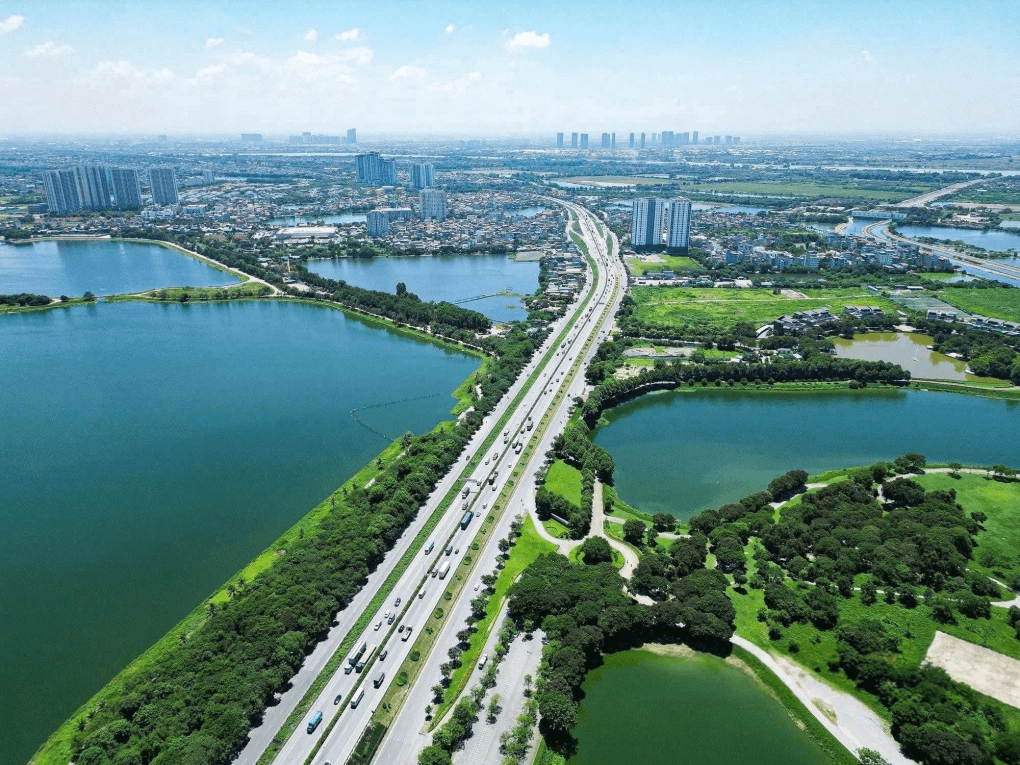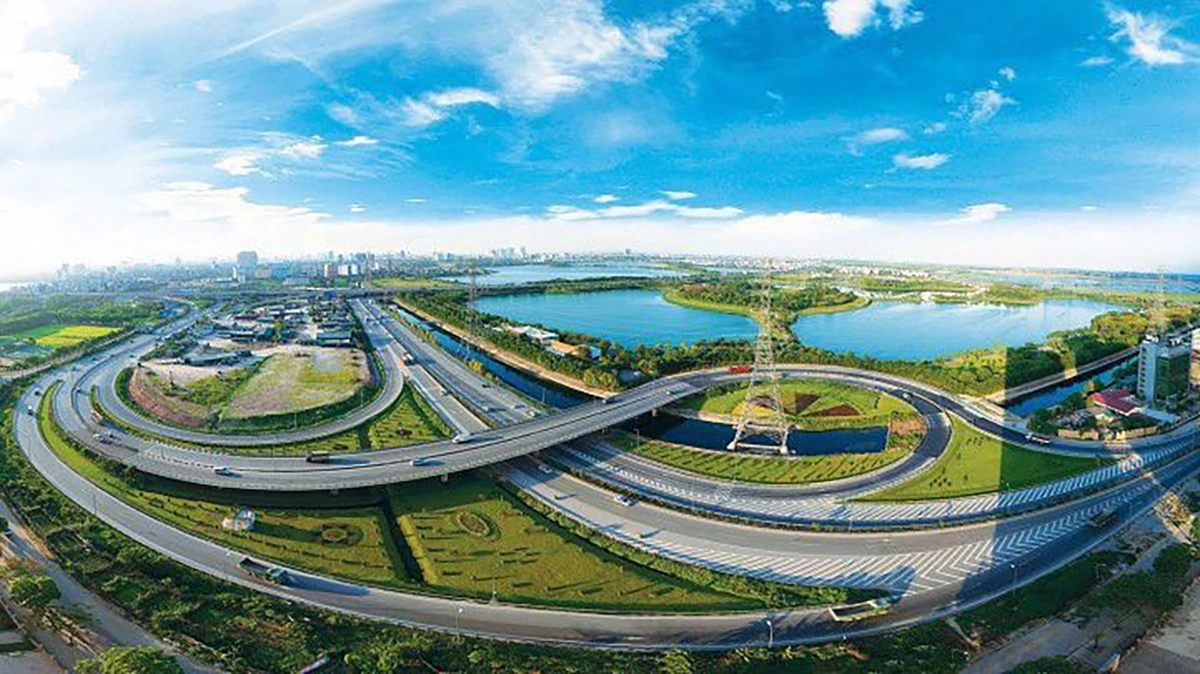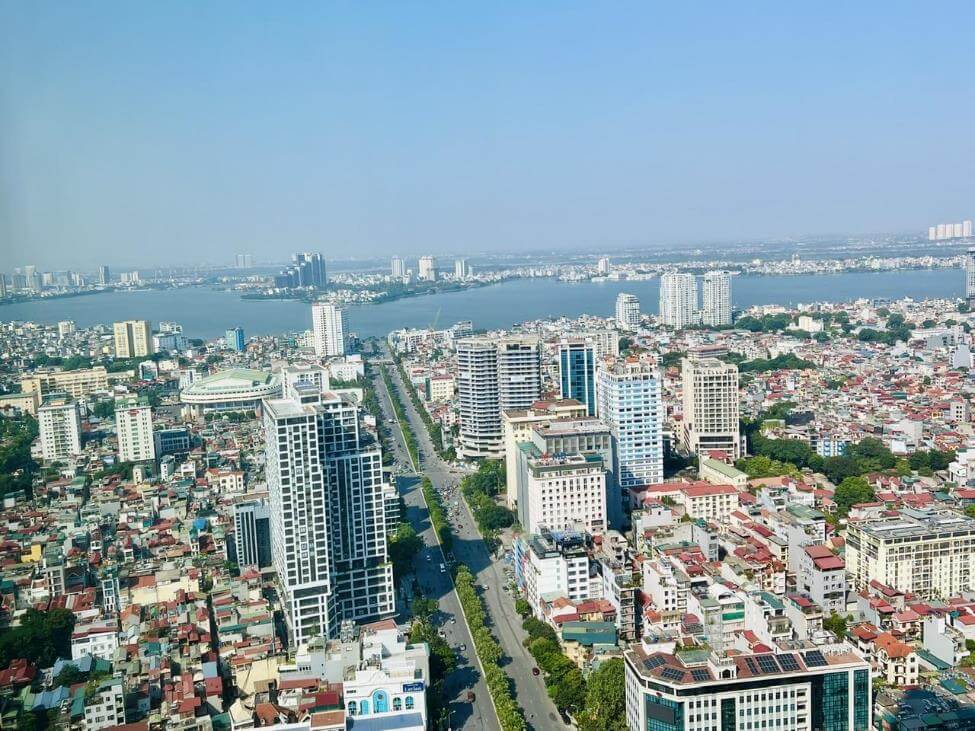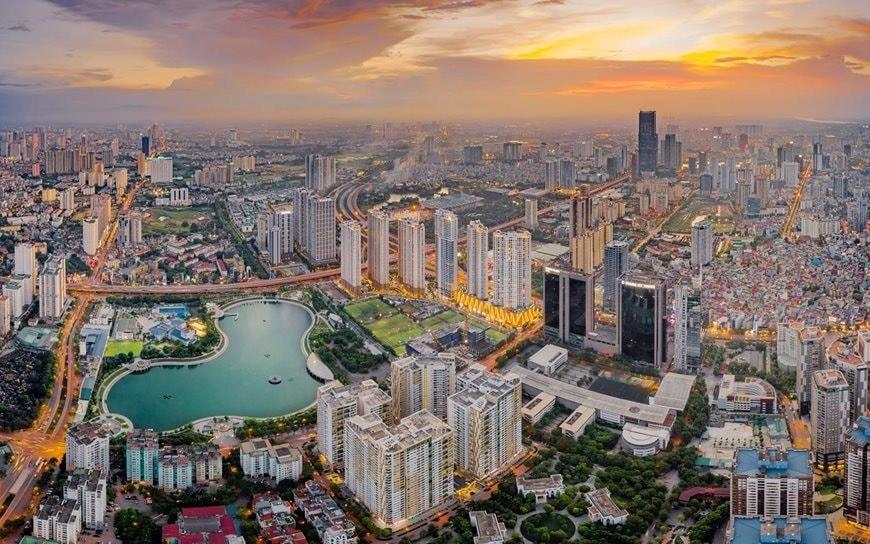Project news
Project news
Competitive prices, investment infrastructure and green space advantages help increase the attractiveness of real estate in South Hanoi. According to the latest report from CBRE, the Hanoi real estate market recorded an increase in supply in 2024, mainly from the metropolitan areas in Nam Tu Liem and Gia Lam. In the fourth quarter, the average primary price of apartments reached VND72 million per square meter, up 36% over the same period last year – the highest level in eight years. The West and East of the capital continued to lead in supply in the first quarter of 2025, with an average price of about VND75 million per square meter, up 34% over the same period. Meanwhile, real estate prices in Hoang Mai district – a typical representative of the South – were only about two-thirds of those in the West and East, according to data from Batdongsan.com.vn. With its price advantage, Hoang Mai recorded a sharp increase in transaction volume, entering the top 5 areas with the highest liquidity in 2024, according to statistics from OneHousing. Infrastructure in the South of Hanoi. Photo: Phuong Hong Hanoi is considering building a second airport in the southern region, with a designed capacity of 50 million passengers per year, according to the Project to adjust the General Planning to 2045, vision to 2065. Along with that, the city proposes to develop a “southern city” – an integrated urban area that plays the role of a multimodal transport service center, connecting aviation, national and urban railways, waterways (Red River), and expressways such as Phap Van – Cau Gie, National Highway 5B. Over the past decade, the infrastructure of the southern region has been invested in a systematic manner, notably with Ring Road 3 – especially the elevated section Linh Dam – Mai Dich, connecting
Project news
A series of real estate projects have landed in the West and East of Hanoi in recent times, making the story of infrastructure development in this area bustling with media waves and project sales. In comparison, the number of projects launched in the South of the capital is not much, so the story of infrastructure is “not too noisy”. But within the market, the infrastructure planning in the South is still changing strongly and sustainably with great potential in the long term. The inter-regional transport network has developed remarkably The South of Hanoi has been gradually building a solid infrastructure foundation, creating a solid tripod, balancing the “battlefield” of Hanoi’s urban area and ready to enter a new breakthrough cycle. In fact, in just over a decade, the infrastructure in the South has had spectacular breakthroughs, with incredible connectivity and spillover effects. The South area affirms its strategic position when directly connecting to the central area and neighboring provinces through the vital traffic network. The completion of Ring Road 3 – especially the elevated section from Linh Dam to Mai Dich has opened a new “blood vessel” for the capital’s traffic. Not only shortening travel time between gateways, this route also acts as a radial axis, connecting the East – South – West – North infrastructure network of Hanoi, creating a strategic traffic corridor for both freight and passenger transport. Traffic infrastructure in the South of Hanoi accelerates dramatically If Ring Road 3 helps the South connect to the inner city quickly, the Phap Van – Cau Gie expressway is the gateway of the capital, helping to shorten travel to the southern provinces such as Ha Nam, Ninh Binh, Thanh Hoa… Also from the key point of the gateway In the South, Giai Phong – Ngoc Hoi route acts as
Project news
Amid global fluctuations, domestic cash flows are strongly pumped into the economy, creating the premise for a new growth cycle – where real estate continues to play a role as a sustainable and attractive investment channel. APEC – “leverage” to accelerate real estate in the host region Meypearl Harmony Phu Quoc is honored as an apartment complex best coastal 2024 A volatile economic cycle Entering 2025, the world economy faces a new cycle full of uncertainty. The event that sparked this volatile future was the re-election of billionaire Donald Trump as US President, followed by a series of tough trade policies. On April 2, President Trump announced the new US tariff policy. Accordingly, the US imposed reciprocal import tariffs on more than 180 trading partners. About half of them were subject to a common tax rate of 10% from April 5. Other major trading partners are subject to tariffs ranging from 15% to nearly 50% from April 9. Vietnam is subject to a rate of 46%, among the countries with the highest tariffs along with China, Cambodia, Indonesia, and Myanmar. Photo: Dan Viet Faced with the above challenges, Vietnam remains steadfast in maintaining its GDP target of 8% or more in 2025. To achieve this, a series of economic and financial policies have been activated. The first is the strategy of promoting reform of the apparatus and streamlining administrative procedures, cutting a series of investment, licensing, tax, customs processes, etc. to help businesses save costs and shorten project implementation time. In addition, public investment has become a spearhead to stimulate demand with a total planned capital for 2025 of up to VND 791,000 billion (equivalent to 6.4% of GDP), the strongest increase in the past 10 years. Key projects such as the North-South Expressway Phase 2, Long Thanh Airport, Hanoi
Project news
Amid global fluctuations, domestic cash flows are strongly pumped into the economy, creating the premise for a new growth cycle – where real estate continues to play a role as a sustainable and attractive investment channel. APEC – “leverage” to accelerate real estate in the host region Meypearl Harmony Phu Quoc is honored as an apartment complex best coastal 2024 A volatile economic cycle Entering 2025, the world economy faces a new cycle full of uncertainty. The event that sparked this volatile future was the re-election of billionaire Donald Trump as US President, followed by a series of tough trade policies. On April 2, President Trump announced the new US tariff policy. Accordingly, the US imposed reciprocal import tariffs on more than 180 trading partners. About half of them were subject to a common tax rate of 10% from April 5. Other major trading partners are subject to tariffs ranging from 15% to nearly 50% from April 9. Vietnam is subject to a rate of 46%, among the countries with the highest tariffs along with China, Cambodia, Indonesia, and Myanmar. Photo: Dan Viet Faced with the above challenges, Vietnam remains steadfast in maintaining its GDP target of 8% or more in 2025. To achieve this, a series of economic and financial policies have been activated. The first is the strategy of promoting reform of the apparatus and streamlining administrative procedures, cutting a series of investment, licensing, tax, customs processes, etc. to help businesses save costs and shorten project implementation time. In addition, public investment has become a spearhead to stimulate demand with a total planned capital for 2025 of up to VND 791,000 billion (equivalent to 6.4% of GDP), the strongest increase in the past 10 years. Key projects such as the North-South Expressway Phase 2, Long Thanh Airport, Hanoi
Project news
Tuan Son The Asia-Pacific Economic Cooperation (APEC) Forum not only has diplomatic significance but also opens up golden opportunities for comprehensive development, from attracting investment, upgrading infrastructure to expanding trade… After each session, APEC not only brings a new breeze to the economy but also becomes the driving force for the explosion of the real estate market in the host localities. ECONOMIC BOOM AFTER EACH APEC SESSION In 2006, Vietnam hosted the APEC Summit for the first time in Hanoi, which was considered an occasion for “Vietnam’s debut,” starting the process of development and integration into the world. world. After the success of APEC 2006, Vietnam’s economy has also made a strong breakthrough, reaping many proud achievements. According to the World Bank (WB) report, Vietnam’s Gross Domestic Product (GDP) has increased more than 2.5 times, from 25 billion USD in 1996 to 66 billion USD in 2006. Gross National Income (GNI) per capita increased from 310 USD in 1996 to 760 USD in 2006. In 2007, right after APEC 2006, Vietnam witnessed an impressive GDP growth of 8.46%, the highest in more than a decade. Registered FDI capital also skyrocketed by 78%, reaching 21.3 billion USD, affirming the attractiveness of the Vietnamese market to international investors. In Hanoi (the host city of APEC 2006), the period 2006 – 2007 also marked a strong development of the capital’s economy. In 2006, the gross regional domestic product (GRDP) increased by 11.5% compared to 2005. In 2007: GRDP continued to increase by 12.07% compared to 2006. In addition, the city’s budget revenue also achieved significant growth. In 2007, the total budget revenue in the area reached 45,798 billion VND, not only exceeding the estimate by 2% but also increasing by 19.2% compared to 2006. APEC 2006 has boosted Vietnam’s economy impressive growth. Eleven







